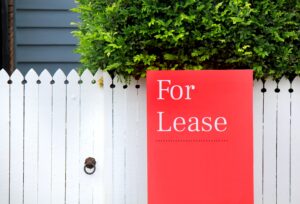
Mastering Rent Reviews
If you haven’t reviewed your rent in a while, chances are you’re missing out on extra income. With costs rising and rental demand showing no signs of slowing, optimising your rent can make a massive difference to your bottom line.
But here’s the thing – rent reviews aren’t just about bumping up the price. A well-timed and fair rent increase can help you maximise returns without risking a good tenant walking out the door. Get it wrong, and you could face vacancies or Tribunal disputes.
That’s why having a clear strategy and knowing the rules is key.
The rules
Each state has its own regulations on how and when you can increase rents. If you’re investing interstate, these rules are especially important to get right.
NSW: 60 days’ written notice, clearly stipulating the proposed rent amount and the starting date of the increase. Increases for fixed term agreements of under two years must be stated in the tenancy agreement. Periodic leases and agreements over two years can be increased once in a 12-month period.
VIC: 60 days’ written notice. Increases allowed once in a six-month period for leases started before 19 June 2019, and once in a 12-month period for all other leases.
QLD: Increases allowed once in a 12-month period with two months’ written notice. Must be stipulated in the lease for fixed terms.
WA: 60 days’ written notice and approval from the Department of Commerce. Must be stipulated in the lease for fixed terms. Increases allowed once in a 12-month period.
SA: 60 days’ written notice. Increases allowed once in a six-month period for leases started before March 2021, and once in a 12-month period for all other leases.
NT: 30 days’ written notice. Must be stipulated in the lease for fixed terms. Increases allowed once in a 6-month period.
ACT: Eight weeks’ written notice. Must be stipulated in the lease for fixed terms. Increases allowed once in a 12-month period.
TAS: 60 days’ written notice. Increases allowed once in a 12-month period.
Striking the right balance
Knowing when and how to review your rent is a huge part of keeping your investment performing at its best. We know it can be tempting to push for a hefty rent hike as soon as the opportunity comes up. We are all familiar with the financial pressures of owning a property – but before you jump the gun, it’s worth taking a step back to fully consider your options.
As property investors ourselves, we understand the balancing act between maximising returns and retaining tenants. The right decision depends on your property, your tenant, and your long-term strategy.
Slow and steady wins the race
While there is no set limit on how much landlords can increase rent, bigger isn’t always better. Aggressive increases can drive tenants away, leaving you with empty rooms and no income. There’s also the risk of tenants applying to the Tribunal if they believe that the increase is excessive.
The better approach may be to keep rent increases reasonable, consistent, and in line with the market. Incremental increases keep your income growing while reducing the risk of tenant turnover. By making consistent annual increases, future adjustments are made more predictable and expected, avoiding the stress of sudden rent hikes or long vacancy periods.
Strengthening tenant retention
One strategy we often recommend is to add value to the property alongside the rent increase. Fresh paint, updating appliances, or even offering flexible lease terms can show tenants that they’re getting value for their money. These simple upgrades can make tenants feel appreciated and encourage them to stay, maintaining a steady stream of passive income. Sometimes, investing upfront is worthwhile in securing long-term returns.
Key considerations
When it comes time to discuss a rental increase with your property manager, there are a few key things to keep in mind. Firstly, market conditions are a major player. Recently, we have observed an excess in demand and an undersupply of properties, giving landlords the upper hand when it comes to setting competitive rents. Interest rate fluctuations directly impact the cost of holding an investment which must be factored into increases.
If you have made any upgrades to the features and condition of your property, the added value can absolutely justify a higher rent. Comparable properties may also act as a benchmark for how much your property could rent for.
Don’t forget your own expenses too! Between mortgage repayments, insurances, rates, and maintenance, the cost of owning can increase quite quickly. This must be factored into the increase ensuring your bottom line is protected and your investment remains profitable.
At Blink Property, our team regularly conducts rental reviews to make sure your investment is optimised while retaining great tenants. If you’re unsure about how to approach your next rent review, get in touch with us and we will help you get it right!
Related posts


Impacts of the RBA’s Latest Interest Rate Cut


